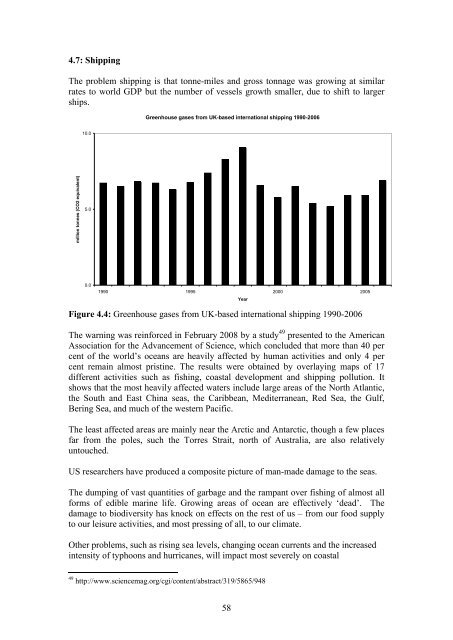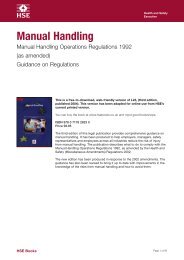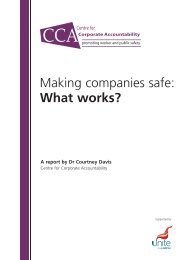Sustainable Transport and the Environment Guide - Unite the Union
Sustainable Transport and the Environment Guide - Unite the Union
Sustainable Transport and the Environment Guide - Unite the Union
You also want an ePaper? Increase the reach of your titles
YUMPU automatically turns print PDFs into web optimized ePapers that Google loves.
4.7: Shipping<br />
The problem shipping is that tonne-miles <strong>and</strong> gross tonnage was growing at similar<br />
rates to world GDP but <strong>the</strong> number of vessels growth smaller, due to shift to larger<br />
ships.<br />
Greenhouse gases from UK-based international shipping 1990-2006<br />
10.0<br />
million tonnes (CO2 equivalent)<br />
5.0<br />
0.0<br />
1990 1995 2000 2005<br />
Year<br />
Figure 4.4: Greenhouse gases from UK-based international shipping 1990-2006<br />
The warning was reinforced in February 2008 by a study 49 presented to <strong>the</strong> American<br />
Association for <strong>the</strong> Advancement of Science, which concluded that more than 40 per<br />
cent of <strong>the</strong> world’s oceans are heavily affected by human activities <strong>and</strong> only 4 per<br />
cent remain almost pristine. The results were obtained by overlaying maps of 17<br />
different activities such as fishing, coastal development <strong>and</strong> shipping pollution. It<br />
shows that <strong>the</strong> most heavily affected waters include large areas of <strong>the</strong> North Atlantic,<br />
<strong>the</strong> South <strong>and</strong> East China seas, <strong>the</strong> Caribbean, Mediterranean, Red Sea, <strong>the</strong> Gulf,<br />
Bering Sea, <strong>and</strong> much of <strong>the</strong> western Pacific.<br />
The least affected areas are mainly near <strong>the</strong> Arctic <strong>and</strong> Antarctic, though a few places<br />
far from <strong>the</strong> poles, such <strong>the</strong> Torres Strait, north of Australia, are also relatively<br />
untouched.<br />
US researchers have produced a composite picture of man-made damage to <strong>the</strong> seas.<br />
The dumping of vast quantities of garbage <strong>and</strong> <strong>the</strong> rampant over fishing of almost all<br />
forms of edible marine life. Growing areas of ocean are effectively ‘dead’. The<br />
damage to biodiversity has knock on effects on <strong>the</strong> rest of us – from our food supply<br />
to our leisure activities, <strong>and</strong> most pressing of all, to our climate.<br />
O<strong>the</strong>r problems, such as rising sea levels, changing ocean currents <strong>and</strong> <strong>the</strong> increased<br />
intensity of typhoons <strong>and</strong> hurricanes, will impact most severely on coastal<br />
49 http://www.sciencemag.org/cgi/content/abstract/319/5865/948<br />
58
















